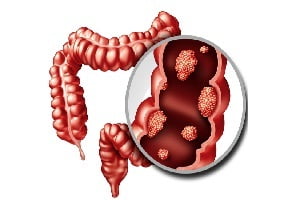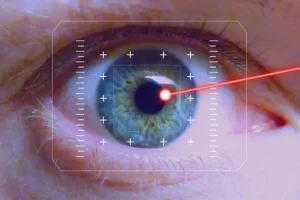Lump in Armpit: Causes, Size, Treatment
- Updated on: Jun 26, 2024
- 5 min Read
- Published on Oct 3, 2019

Lump in Armpit
The enlargement of at least one lymph node under your arm may sometimes indicate presence of a lump under your armpit. Lymph nodes are specialized small, oval-shaped glands which are present throughout the body. These lymph nodes play a key role in the body’s immune response.
Lumps under armpits are very common and may occur due to various causes, which may or may not lead to a serious health issue.
Causes of lump in armpit or lump under armpit
In most cases, lump in armpit are not dangerous. They may occur due to an abnormal tissue growth under your arm. Lumps under armpit can be dangerous and may represent a sign of some serious health problem in your body. Therefore, it is necessary to get your lumps evaluated by your physician.
A lump under armpit can occur due to the following reasons:
- Any bacterial or viral infection
- Lipomas-Growth of fat tissues which are harmless
- Fibro adenoma-growth of non-cancerous fibrous tissue
- Occurrence of any allergic reaction due to deodorants, antiperspirant or soap
- Occurrence of adverse reaction due to vaccination
- Fungal infection
- Breast cancer
- Lymphoma-cancer of the lymphatic system
- Blood cell cancer – leukemia
- Due to lupus, which is an autoimmune disease that affects the joints and organs
- Appearance of cyst or fluid filled sacs under your armpits
- An infection in lymph nodes in armpit which develops into a lump
See also: Lump Near Anus
See also: Neck Lumps and Bumps: What Do They Mean?
Signs and symptoms that indicate formation of a lump in armpit
Lumps under armpits have various significant symptoms which may depend upon the cause of their occurrence. The most prominent symptoms of lumps in armpits are as follows:
- You may observe swollen lymph nodes throughout your body
- Fever
- Night sweats
- Sometimes, people may experience painful lumps in armpit
- Lump under your armpit may move around
- They may hang off your skin and appear as a separate globular mass of skin
Allergic reaction and infection lead to formation of painful lump in armpits. If your lymph nodes get infected due to bacterial or fungal growth, it can lead to appearance of painful lumps under your armpits.
Shape and size of lumps in armpits
The size of armpit lumps can vary from about small lump which is about a pea-size and are unnoticeable to eyes, or large hard lumps which appear as huge golf balls under your armpit.
The textures of armpit lumps depend upon their cause of occurrence. A lump caused due to a cyst or infection or growth of fatty tissues is felt as a soft, tender lump under your armpit. Hard lumps may appear in case of fibro adenomas and cancerous tumors, which are mobile or moving.
If you observe any abnormal mass of skin under your armpit which changes in size gradually or does not reduce on its own, it may indicate a serious health problem, such as breast cancer, lymphoma or leukemia.
Lump under armpit: Male vs. Female
Armpit lumps are found in both men and women belonging to all age groups. Generally, a woman may experience lumps under her armpits, which may sometimes be an evident sign of breast cancer. Women should perform a through self-examination of their breasts every month and report it to the doctor if they notice any lump in their armpits.
Women undergo major hormonal changes during menstrual cycle, which may lead to changes in their breasts. You may feel your breast to be tenderer or lumpier during menstruation, which is quite normal. The best time to self-examine your breast for any signs of breast cancer can be after one to three days, once your periods end.
Men may observe lump in armpits which may rarely be a sign of breast cancer. Men observing painless lumps under their armpits can initially wait to visit a doctor, until they experience growing symptoms. Men are less prone to experience breast cancer as compared to females. Read about breast cancer in men.
More: Leukemia (Blood Cells Cancer): Causes, Signs, Symptoms, Diagnosis, Prevention, Treatment
More: Leukemia in Children (Childhood Leukemia)
What are the signs that indicate severity of a lump under your armpit?
Lumps under armpits may be harmless or may indicate a serious health trouble. The severity of an armpit lump is determined through a physical examination or through specific laboratory test.
Major of warning signs which indicate a serious health problem are as follows:
- Gradual enlargement of the lump
- If you observe any painless lump under your armpit
- If the lumps under your armpits are extremely painful
- If you observe a hard lump which does not move
- If the size of an armpit lump does not reduce on its own after a few days
If you observe any of these signs, you should immediately consult your doctor for proper examination of the lump under your armpit.
Diagnosis of lump in armpit
It is advisable that you self examine your armpits on a regular basis to check for any signs of a sore lump in your armpits or any other type of abnormal mass growth. If you observe any small or large lump in your armpit, you should consult your doctor on a priority basis.
Diagnosis of armpit lumps is carried by your doctor through a physical examination of the armpits and certain laboratory tests, if required.
Your doctor may recommend continuous and careful self-examination of your armpit lump to identify significant symptoms related to it.
Physical Examination of Sore Lump in Armpits
A through physical examination is the first step while diagnosing any lumps present in your armpits. Your doctor may ask question regarding changes in your lump such as if you experience any pain under your arm, changes in size and movement of the lump.
The doctor may perform a physical examination through palpation or massage, by placing his hand on the lumps to gently examine the swollen lymph nodes. These methods allow examination of the consistency and texture of the lump in your armpit.
In some situations, a physical examination is sufficient to identify if the lump is harmful or not. For example, lipomas do not require any medical treatment; they may reduce on their own. If the lump or knot under your armpit is harmful, your doctor may advise suitable treatment for its cure.
Diagnostic tests for a lump or bump under armpit
If the physical examination is not sufficient for analysis of abnormal growth under your armpit, your doctor may recommend certain laboratory tests for its examination. These lab tests analyze the exact cause of occurrence of a tender lump such as allergic reaction, infections or certain cancerous changes. Your doctor may recommend a combination of lab tests, which are as follows:
Complete Blood Count
A complete blood count estimates the total amount of red and white blood cells in your body. It helps to identify presence of any infection in the body.
Mammogram
A mammogram is an X-ray of your chest or breast region. This allows a better digital examination of your lump.
Biopsy
Biopsy involves removal of a small part of the enlarged tissue for its better examination.
Allergy Testing
Allergy testing involves a series of tests to identify presence of any allergic reaction in the body.
Armpit lump Treatment
In most cases, lump under your armpit may not require any treatment. You can try certain home remedies to provide comfort from troublesome symptoms such as:
- warm compress or heat packs
- over-the-counter pain relievers such as ibuprofen
- certain over-the-counter creams
Lumps in armpits which do not require any medical treatment for cure include:
- Lipomas
- Viral Infection
- Fibro adenoma
Nodules formed due to lipomas or viral infections are harmless and may diminish on their own. Lipomas can be treated with consultation from a specialized dermatologist.
Treatment of armpit lumps depends upon the exact cause of their occurrence.
Infection
If a hard lump is formed in your armpit due to a bacterial or fungal infection, your doctor may recommend a course of oral antibiotics to provide relief and comfort. As your body fights with the infection, the lump may start reducing and may disappear simultaneously. If oral antibiotics are not effective, then you may be hospitalized for intravenous antibiotic administration.
Allergy
If the tiny lump under your armpit is developed due to an allergic reaction, your doctor may recommend specific medication and avoid allergic triggers which lead to the onset of an allergic reaction.
Fatty tissue or cyst
If you experience any tiny lump in your armpit due to growth of fatty tissue or cyst formation, your doctor may remove these lumps. Removal of fatty tissue or cyst is a short and risk-free procedure.
Cancer: Is the lump in armpit a sign of cancer?
If you observe a tumor growth under your armpit which has a chance of becoming cancer, your doctor may recommend you to meet a cancer specialist for its treatment. The treatment of cancerous lump in your armpit depends upon the type of cancer and its stage of growth. The doctor may recommend a combination of treatment therapies such as chemotherapy, radiation therapy or surgery.











